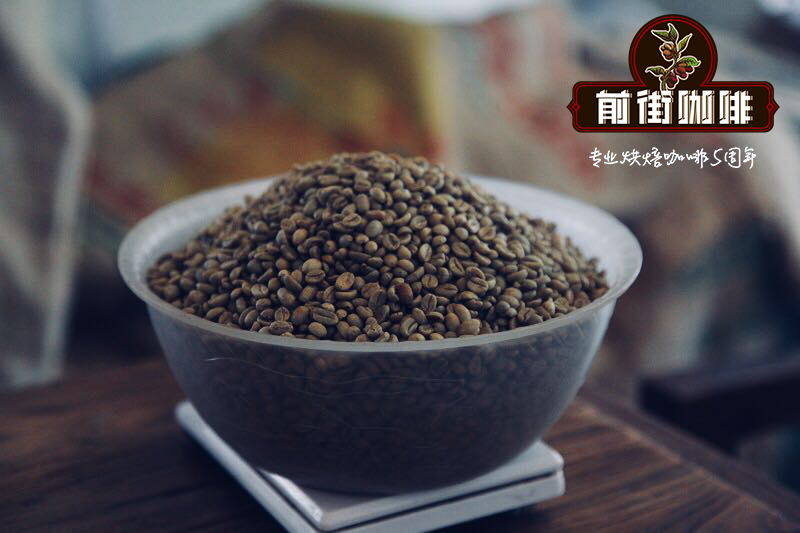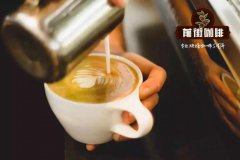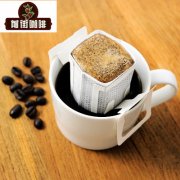Why is Blue Mountain coffee so expensive? How can I cook it to taste good?

Professional coffee knowledge exchange more coffee bean information please follow the coffee workshop (Wechat official account cafe_style)
Why is Blue Mountain coffee so expensive? How does it taste good?
Blue Mountain Coffee refers to coffee brewed from beans from the Blue Mountains of Jamaica. According to the grade, it is divided into Jamaica Blue Mountain Coffee and Jamaican Alpine Coffee. The Blue Mountains are located in the eastern part of the island of Jamaica, hence its name because it is surrounded by the Caribbean Sea. On clear days, the sun shines directly on the blue sea, and the peaks reflect the bright blue light of the sea. The highest peak of the Blue Mountains, which is 2256 meters above sea level, is the highest peak in the Caribbean and a famous tourist attraction. Located in the coffee belt, with fertile volcanic soil, fresh air, no pollution, humid climate, foggy and rainy all the year round (the average precipitation is 1980 mm, the temperature is around 27 degrees), this climate has created the world-famous Jamaican Blue Mountain Coffee and the second most expensive coffee in the world. This kind of coffee has the characteristics of all good coffee, not only full-bodied and mellow, but also because of the perfect combination of sweet, sour and bitter coffee, it has no bitter taste at all, only a moderate and perfect sour taste.
It is necessary to carefully understand the myth of Blue Mountain Coffee, because the image of the past is often inconsistent with the reality of today. In 1725, Sir Nicholas Sir Nincholas Lawes brought the first blue mountain coffee trees from Martinique to Jamaica and planted them in St. Andrew) region. Today, St. Andrews is still one of the top three producers of Blue Mountain Coffee, with the other two being Portland and St. Thomas) origin. In eight years, Jamaica exported more than 375 tons of pure coffee. In 1932, coffee production reached its peak and more than 15000 tons of coffee was harvested.
However, by 1948, the quality of coffee had declined and Canadian buyers refused to renew their contracts, so the Government of Jamaica established the Coffee Industry Committee to save the fate of top coffee, and by 1969 the situation had improved. because the use of Japanese loans to improve the quality of production, thereby ensuring the market. Even in 1969, Japanese coffee drinkers were willing to insure the coffee. By now, this kind of coffee has reached the point of being feverishly loved.
By 1981, about 1500 hectares of land in Jamaica had been reclaimed for coffee cultivation, followed by investment in another 6000 hectares of coffee land. In fact, today's Blue Mountain area is a small area with a planting area of only 6000 hectares, and it is impossible to grow all the coffee marked "Blue Mountain" there. Another 12000 hectares of land is used to grow two other types of coffee (non-Blue Mountain Coffee): Alpine Top Coffee (High Monuntain Supreme) and Jamaican Premium Coffee (Prime Washed Jamaican).
Blue Mountain Coffee is one of the most advantageous coffee growing conditions in the world. Jamaica's weather, geological structure and topography provide a unique ideal place. The ridge that runs through Jamaica extends to the eastern part of the island, with the Blue Mountains rising to more than 2100 meters. Cool weather, foggy, frequent precipitation, use this rich soil Rain Water to reconcile. Here, a mixed planting method is used to grow coffee trees to accompany banana trees and avocado trees on terraces.
How can I make a cup of blue mountain coffee?
Filter cup selection: V60 filter cup, kalita fan and KON0 are available.
Parameters: 15g powder, water temperature 86 degrees, grinding 4, ratio of water to powder close to 1:14, total time about 2:00
Technique: 25-30g water steaming, the steaming time is 25s, the first stage water injection to 120g water cut off; vertical flow, small flow slowly circle; the second stage water injection to 225g, the flow and circle speed is slightly faster, reducing powder clogging the filter cup, resulting in over-extraction.
Other extraction suggestions:
Normal pressure: 3.5-4 degree of grinding / water temperature 90 degrees
Siphon: 4 degree of grinding, water temperature: 89 degrees
Philharmonic pressure, 2.5 degree of grinding, water temperature 88 degrees
-- END
For more professional coffee exchanges, please scan the code and follow Wechat: qiannjie

Please indicate the source of the reprint.
Important Notice :
前街咖啡 FrontStreet Coffee has moved to new addredd:
FrontStreet Coffee Address: 315,Donghua East Road,GuangZhou
Tel:020 38364473
- Prev

Do you need sugar for coffee? Will sugar change the flavor of coffee?
Professional coffee knowledge exchange more coffee bean information Please pay attention to the coffee workshop (Wechat official account cafe_style) when drinking coffee, we always like to add some milk or sugar to the coffee cup. However, we find that due to the influence of different regions and cultures, there are more and more kinds of sugar packets matched with coffee, including crude sugar, fine sugar, yellow sugar (sucrose) and white sugar (granulated sugar). Research
- Next

Travel must hang earbag! How can I cook it better? What are the points for attention?
Professional coffee knowledge exchange more coffee bean information please follow the coffee workshop (Wechat official account cafe_style travel must-have earbag! How can I cook it better? What are the points for attention? Hanging earbag is the legendary essential product for home travel to work and work, which can not only satisfy the daily caffeine intake, but also satisfy the self-brewing coffee in various environments.
Related
- How did the Salvadoran coffee industry develop in Central America?
- What exactly does the golden cup extraction of coffee mean?
- The Origin of Coffee flower
- [2023 Starbucks World Earth Day] there are more meaningful things besides free Starbucks coffee!
- What kind of coffee is there in Spain? 9 Flavors of Spanish Coffee
- Aromatic African coffee| Kenya's coffee culture and historical production area
- Liberica Coffee Bean knowledge: the characteristics of Liberian Coffee beans of the three original species of Coffee beans
- The origin and formula of Spanish latte introduces the taste characteristics of Bombon coffee in Valencia, Spain.
- How to adjust the solution of over-extracted coffee
- What is the tasting period of coffee beans? What is the period of coffee and beans? How should coffee wake up and raise beans?

